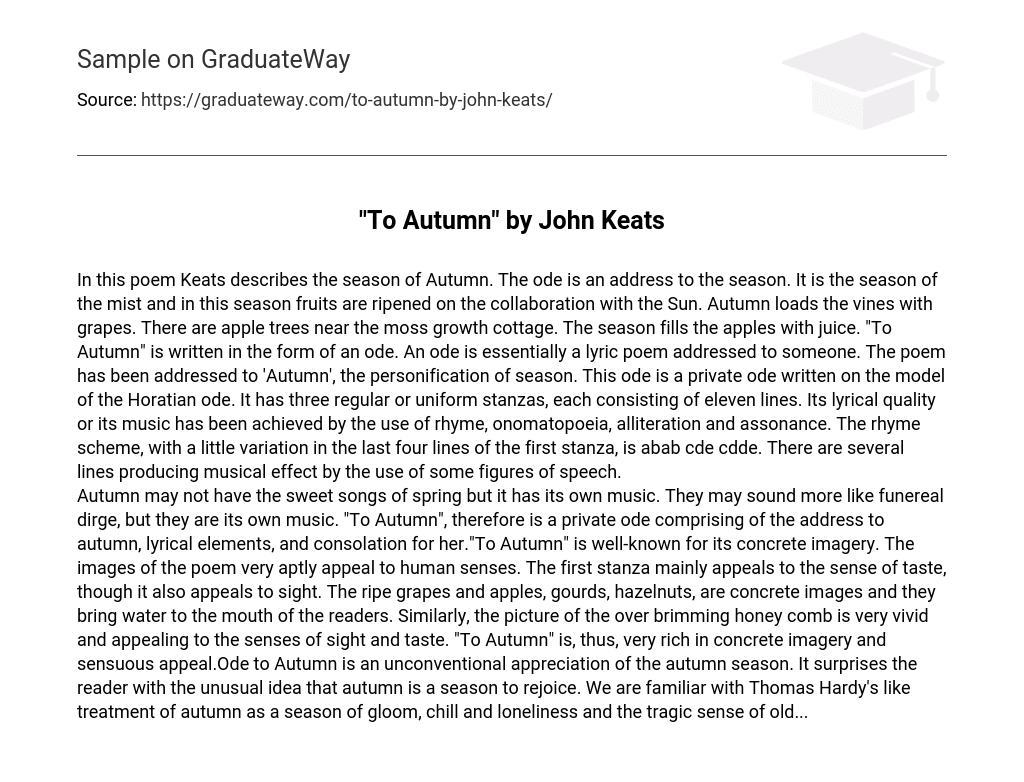In this poem Keats describes the season of Autumn. The ode is an address to the season. It is the season of the mist and in this season fruits are ripened on the collaboration with the Sun. Autumn loads the vines with grapes. There are apple trees near the moss growth cottage. The season fills the apples with juice.
“To Autumn” is written in the form of an ode. An ode is essentially a lyric poem addressed to someone. The poem has been addressed to ‘Autumn’, the personification of season. This ode is a private ode written on the model of the Horatian ode.
It has three regular or uniform stanzas, each consisting of eleven lines. Its lyrical quality or its music has been achieved by the use of rhyme, onomatopoeia, alliteration and assonance. The rhyme scheme, with a little variation in the last four lines of the first stanza, is abab cde cdde. There are several lines producing musical effect by the use of some figures of speech. Autumn may not have the sweet songs of spring but it has its own music. They may sound more like funereal dirge, but they are its own music.
“To Autumn”, therefore is a private ode comprising of the address to autumn, lyrical elements, and consolation for her.”To Autumn” is well-known for its concrete imagery. The images of the poem very aptly appeal to human senses. The first stanza mainly appeals to the sense of taste, though it also appeals to sight. The ripe grapes and apples, gourds, hazelnuts, are concrete images and they bring water to the mouth of the readers. Similarly, the picture of the over brimming honey comb is very vivid and appealing to the senses of sight and taste.
“To Autumn” is, thus, very rich in concrete imagery and sensuous appeal.Ode to Autumn is an unconventional appreciation of the autumn season. It surprises the reader with the unusual idea that autumn is a season to rejoice. We are familiar with Thomas Hardy’s like treatment of autumn as a season of gloom, chill and loneliness and the tragic sense of old…





